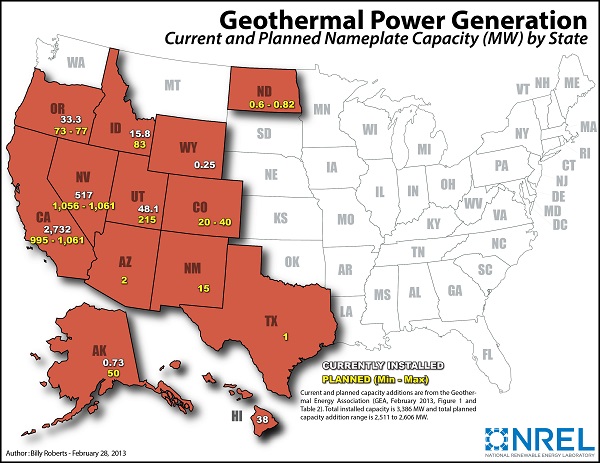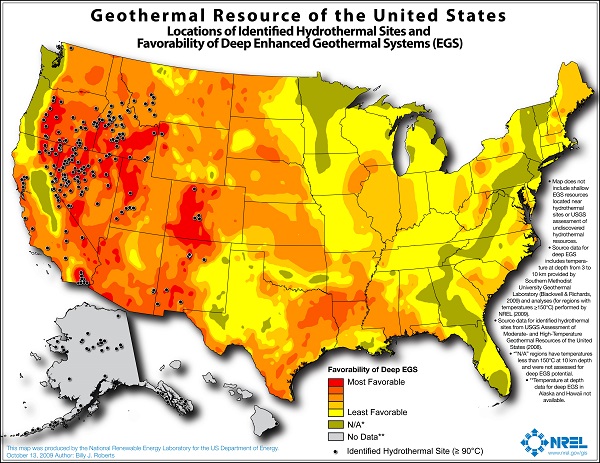You can add New Mexico has the short list of U.S. states that are utility-scale geothermal energy producers.
The new plant in the Animas Valley, way down in the southwestern part of the state, is operating at a modest 4 megawatts right now. But a second phase is expected to kick the power production up to more than double that figure within the next year. And New Mexico officials said they’re hopeful more geothermal sites can be developed in the state.

“This project opens the door for an amazing future for geothermal power in our state,” Secretary of Economic Development Jon Barela said in a statement. “This major project has been a tremendous economic development driver for southwestern New Mexico, and other projects we hope are on the way to continue our development of this resource.” As the map immediately below indicates, the state has at least a handful of other locations that are identified hydrothermal sites.

As enthusiastic as Barela was, the Albuquerque Journal reported that local residents had some concerns about the plant. Unlikely as it sounds, right around the corner from the new geothermal plant in this high dry, ranching country is a company called AmeriCulture, which bills itself as “one of America’s largest tilapia hatcheries.” They take advantage of the area’s naturally hot waters to heat the pools where they raises tilapia fingerlings, so water quality is understandably a chief concern.
State environmental officials said they’ll be watching the plant closely, but developer Cyrq Energy is promising that a closed-loop system poses no threat. From the company’s website:
In this closed-loop system, the hot geothermal fluid is pumped from the deep reservoir to a heat exchanger, where heat from the geothermal fluid is transferred to a working fluid, with a lower boiling point, contained in a separate closed-loop system. This working fluid then flashes and powers the turbines, generating electricity. The geothermal fluid is then re-injected into the same deep reservoir to be naturally reheated without ever coming in contact with the secondary working fluid or exposed to air.
According to the state, the first phase of Cyrq’s Dale Burgett Geothermal Power Plant cost $43 million to build. “The second phase is scheduled to be completed in 2014, for an additional $67 million,” the state said. Cyrq on its website called the plant ultimately would be “capable of generating up to 20 megawatts (MW) of electricity,” although power purchaser PNM said it would be a 10-MW plant and, as you can see, the NREL map at that forecasts 15 MW for New Mexico.